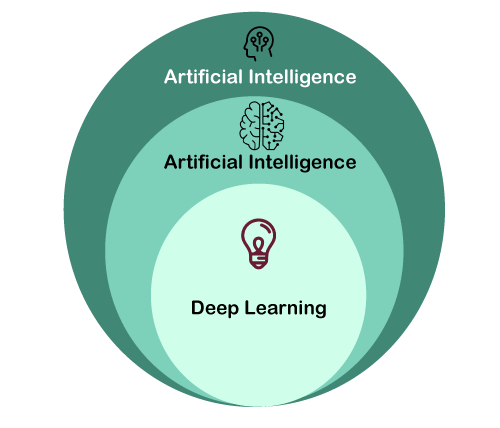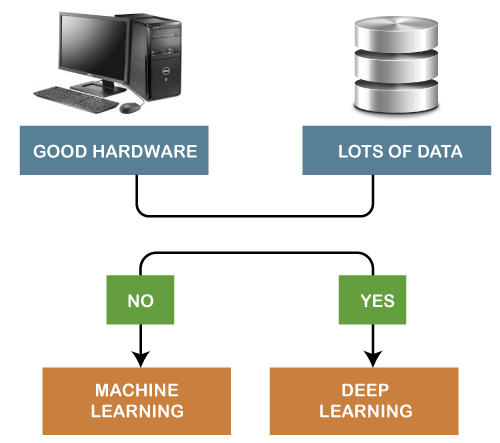Difference between Machine Learning and Deep LearningMachine Learning and Deep Learning are the two main concepts of Data Science and the subsets of Artificial Intelligence. Most of the people think the machine learning, deep learning, and as well as artificial intelligence as the same buzzwords. But in actuality, all these terms are different but related to each other. In this topic, we will learn how machine learning is different from deep learning. But before learning the differences, lets first have a brief introduction of machine learning and deep learning. 
What is Machine Learning?Machine learning is a part of artificial intelligence and growing technology that enables machines to learn from past data and perform a given task automatically. Machine Leaning allows the computers to learn from the experiences by its own, use statistical methods to improve the performance and predict the output without being explicitly programmed. The popular applications of ML are Email spam filtering, product recommendations, online fraud detection, etc. Some useful ML algorithms are:
How does Machine Learning work?The working of machine learning models can be understood by the example of identifying the image of a cat or dog. To identify this, the ML model takes images of both cat and dog as input, extracts the different features of images such as shape, height, nose, eyes, etc., applies the classification algorithm, and predict the output. Consider the below image: 
What is Deep Learning?Deep Learning is the subset of machine learning or can be said as a special kind of machine learning. It works technically in the same way as machine learning does, but with different capabilities and approaches. It is inspired by the functionality of human brain cells, which are called neurons, and leads to the concept of artificial neural networks. It is also called a deep neural network or deep neural learning. In deep learning, models use different layers to learn and discover insights from the data. Some popular applications of deep learning are self-driving cars, language translation, natural language processing, etc. Some popular deep learning models are:
How Deep Learning Works?We can understand the working of deep learning with the same example of identifying cat vs. dog. The deep learning model takes the images as the input and feed it directly to the algorithms without requiring any manual feature extraction step. The images pass to the different layers of the artificial neural network and predict the final output. Consider the below image: 
Key comparisons between Machine Learning and Deep LearningLet's understand the key differences between these two terms based on different parameters:
Which one to select among ML and Deep Learning?As we have seen the brief introduction of ML and DL with some comparisons, now why and which one needs to be chosen to solve a particular problem. So, it can be understood by the given flowchart: 
Hence, if you have lots of data and high hardware capabilities, go with deep learning. But if you don't have any of them, choose the ML model to solve your problem. Conclusion: In conclusion, we can say that deep learning is machine learning with more capabilities and a different working approach. And selecting any of them to solve a particular problem is depend on the amount of data and complexity of the problem.
Next TopicDimensionality Reduction Technique
|
 For Videos Join Our Youtube Channel: Join Now
For Videos Join Our Youtube Channel: Join Now
Feedback
- Send your Feedback to [email protected]
Help Others, Please Share










